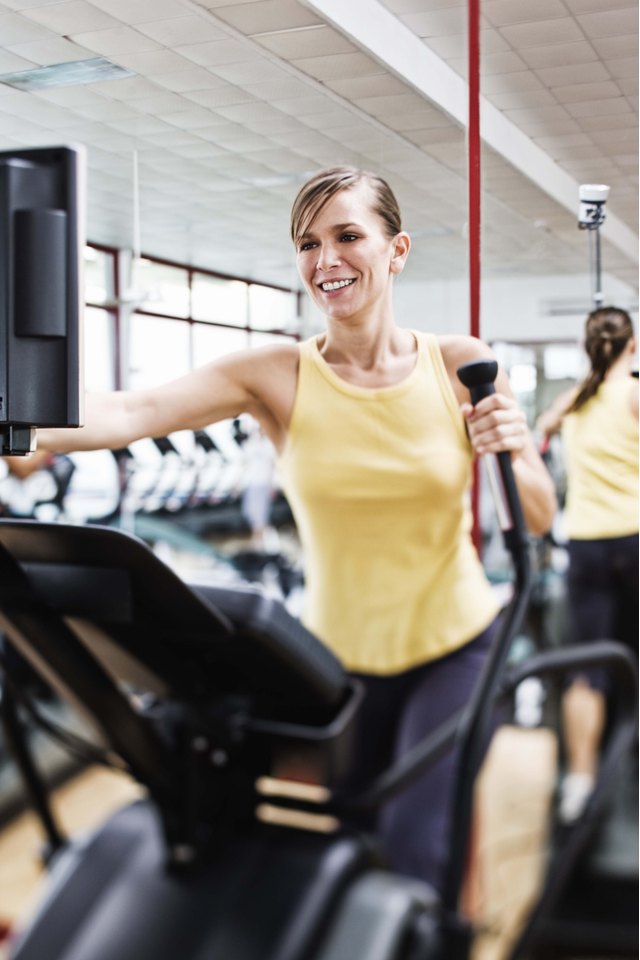The Effects of Stair Climbing Vs. Elliptical Workouts

Stair climbing, on a machine or on an actual flight of stairs, and elliptical workouts are both lower-impact alternatives to jogging and running. You can get an effective cardiovascular workout with either machine. You’ll experience many of the same benefits, regardless of the machine you choose, but some small differences in workout effectiveness exist.
Machine Features
The elliptical machine consists of two pedals that you pedal in an ellipses – the same movement you do when walking, running or jogging. Because your feet never leave the pedals, you do not experience the impact involved when you run and it is generally less taxing on the joints. Stair-climbing machines feature a revolving staircase that you plod up at various speeds. Both types of machine feature controls that allow you to change the speed. Ellipticals also allow you to alter the incline height and the difficulty of the pedal stroke.
Upper Body
An elliptical with poles that you pump back and forth with your arms during your workout helps activate the 30 percent of your muscles that are missed with leg-only workouts. Working your arms along with your legs improves coordination and burns a greater number of calories. Arm poles are a regular feature on elliptical trainers, but are not available on stair-climbing machines. If you walk up stairs for exercise, you will also miss the benefits of upper-arm recruitment.
Calorie Burn
A vigorous workout on the elliptical typically burns about 335 calories in 30 minutes for a 155-pound person. A workout on the stair stepper burns just 223 calories in the same period of time. If you are after a huge calorie burn so you can splurge later or increase your calorie deficit to lose weight, a session on the elliptical done at a high intensity may be a better choice.
Specificity
If you are a mountain climber, a firefighter who must carry equipment upstairs or you find yourself climbing lots of stairs daily, a stair-climbing machine will offer a workout more specific to your goals. An elliptical may be an effective way for an injured runner to maintain fitness levels and the mechanical movement of the hip needed for the sport.
Muscles and Joints
Both machines target the gluteus and thigh muscles. The stair climber could be harder on the knees because of the angle and impact needed to climb the stairs. An elliptical, reduced to a minimal incline, may be more friendly to knees that are sensitive to bending at a 90-degree angle. You can also pedal an elliptical in reverse, changing the way your muscles activate. You cannot easily go backward on a stair-climbing machine or staircase.
References
- American College of Sports Medicine: Selecting and Effectively Using an Elliptical Trainer or Stair Climber
- Harvard Health Publications: Calories Burned in 30 Minutes for People of Three Different Weights
- MayoClinic.com: Elliptical Machines: Better Than Treadmills?
- Popular Mechanics: Aerobics Fitness Machines
Writer Bio
Andrea Cespedes is a professionally trained chef who has focused studies in nutrition. With more than 20 years of experience in the fitness industry, she coaches cycling and running and teaches Pilates and yoga. She is an American Council on Exercise-certified personal trainer, RYT-200 and has degrees from Princeton and Columbia University.
